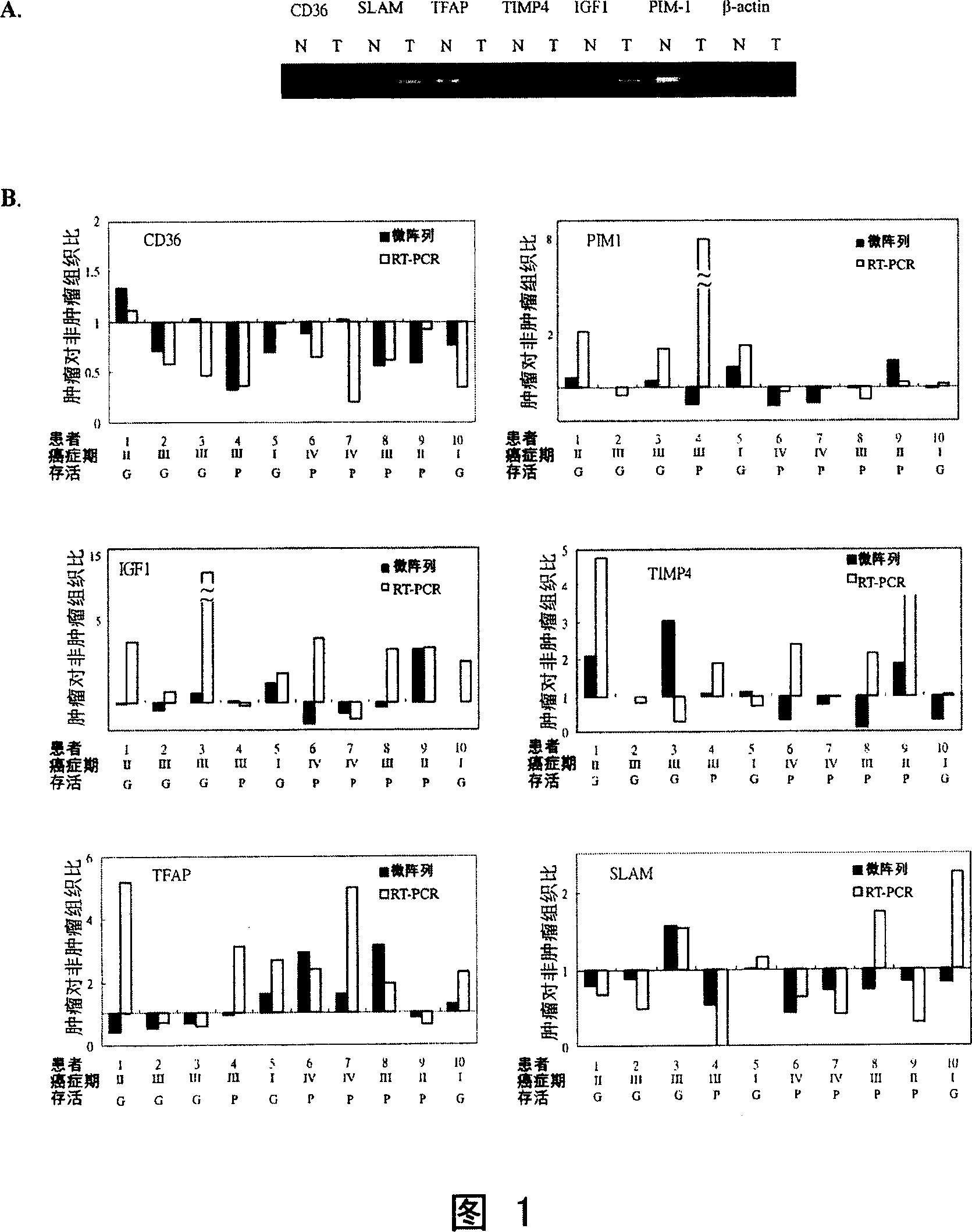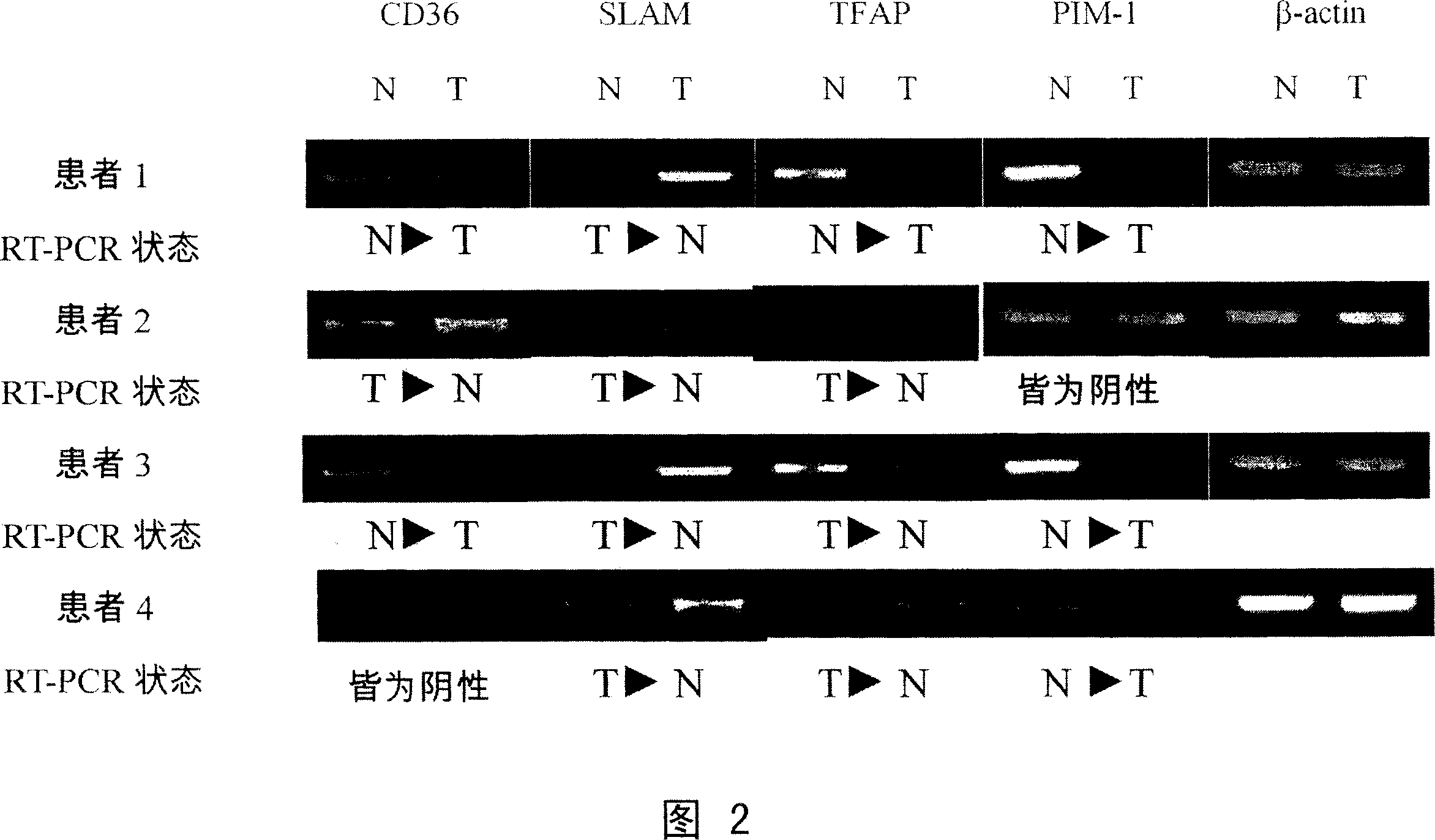Method of forecasting gastric cancer postoperative survival condition by gene expression atlas
A gene expression and gastric cancer technology, applied in the field of predicting the survival rate of cancer after surgery, can solve the problems of recurrence risk, analysis of independent samples, and limitations of clinical application of known methods
- Summary
- Abstract
- Description
- Claims
- Application Information
AI Technical Summary
Problems solved by technology
Method used
Image
Examples
Embodiment 1
[0056] Build a forecast model
[0057] Eighteen pairs of tumor and non-tumor gastric tissue samples were obtained from 18 patients with gastric cancer who had undergone D2 gastrectomy without significant residual tumor in National Taiwan University Hospital. The tumor stage of the patient ranges from stage I to stage IV. Among them, 9 patients died of tumor recurrence within 12 months after surgery, which is defined as "poor survival" here, while the other 9 patients survived more than 30 months after surgery, which are defined as "poor survival" here. Defined as "good survival". In the poor survival group, there were 2 patients with stage II, 4 patients with stage III, and 3 patients with stage IV. In the good survival group, there were 3 patients with stage I, 2 patients with stage II, and 4 patients with stage III. There were no stage I patients in the poor survival group, and no stage IV patients in the good survival group. All patients did not receive postoperative ch...
Embodiment 2
[0072] For an independent test group of 30 patients, the prediction model composed of CD36, SLAM and PIM-1 pointed out by the present invention was used for survival prediction. The tumor and non-tumor tissue samples of these 30 patients were subjected to reverse transcription polymerase chain reaction, and the RT-PCR expression status of CD36, SLAM and PIM-1 in the tissue samples of each patient was obtained accordingly. The expression state of each gene is compared with the RT-PCR state classification table in Example 1, and the aforementioned frequency of occurrence calculated by the 20 genes of the training group is obtained from the table, and the corresponding occurrence of each gene of each patient is obtained. The frequency value is brought into (Equation 1), from which the possible postoperative survival status of the gastric cancer patient can be calculated.
[0073] The results obtained after analysis showed that 23 patients were correctly predicted (76.7%), and pro...
PUM
| Property | Measurement | Unit |
|---|---|---|
| Sensitivity | aaaaa | aaaaa |
| Sensitivity | aaaaa | aaaaa |
| Sensitivity | aaaaa | aaaaa |
Abstract
Description
Claims
Application Information
 Login to View More
Login to View More - R&D
- Intellectual Property
- Life Sciences
- Materials
- Tech Scout
- Unparalleled Data Quality
- Higher Quality Content
- 60% Fewer Hallucinations
Browse by: Latest US Patents, China's latest patents, Technical Efficacy Thesaurus, Application Domain, Technology Topic, Popular Technical Reports.
© 2025 PatSnap. All rights reserved.Legal|Privacy policy|Modern Slavery Act Transparency Statement|Sitemap|About US| Contact US: help@patsnap.com



